|
 |
Our recent publication (Saka et al., 2013) was selected as a “Must Read” paper by Faculty of 1000.
http://f1000.com/prime/718095598?bd=1&ui=150229
|
|
 |
Title:Cellular Senescence in Yeast Is Regulated by rDNA Noncoding Transcription.
Authors: Saka, K., Ide, S., Ganley, A.R., and Kobayashi, T.
Journal: Current Biology. 2013 Sep 23; 23(18):1794-1798, Online Aug. 29th
Abstract
SIR2, coding a NAD+-dependent histone deacethylase that maintains lifespan, is one of the most well-known aging genes. It was first identified in budding yeast and homologues are present in many other eukaryotes, including mammals. Recently, in mouse, it was found that over-expression of the SIR2 homolog extends lifespan (Kanfi, Y et al., 2012), although the mechanism was not elucidated.
In this study, we found that the main target of SIR2’s lifespan maintenance activity is through repression of a noncoding promoter (E-pro) in the ribosomal RNA gene cluster that enhances recombination in the rDNA repeats. We show that by moving the E-pro noncoding promoter from the control by SIR2 onto control by carbon source, we could extend lifespan by ~60 % by adjusting the carbon source and, critically, SIR2 becomes dispensable in this case.
|
|
 |
Authors: Satoru Ide, Kimiko Saka, Takehiko Kobayashi
Research Article | published 04 Apr 2013 | PLOS Genetics 10.1371/journal.pgen.1003410
Gene amplification is one of the major strategies used by cells to increase the abundance of gene products. We have been studying amplification of the rDNA cluster in yeast with a focus on distinguishing the contributions of unequal sister-chromatid recombination vs rolling circle-type amplification as observed in the early developmental stage in amphibian oogenesis. It is not known how these two modes of amplification switch. We screened for yeast mutants in which rDNA copy number was unstable and found and characterized an rtt109 mutant that has an abnormally high rDNA copy number. Evidence is presented that the rolling circle-type amplification occurs in this mutant. Therefore, RTT109 plays a key role in regulating mode of rDNA amplification.
Variation in gene copy number (amplification) has been widely detected in various organisms, contributing to both beneficial adaptation and pathology (e.g., cancer).
Our results shed new light on molecular mechanisms of gene amplification.
(fig.)
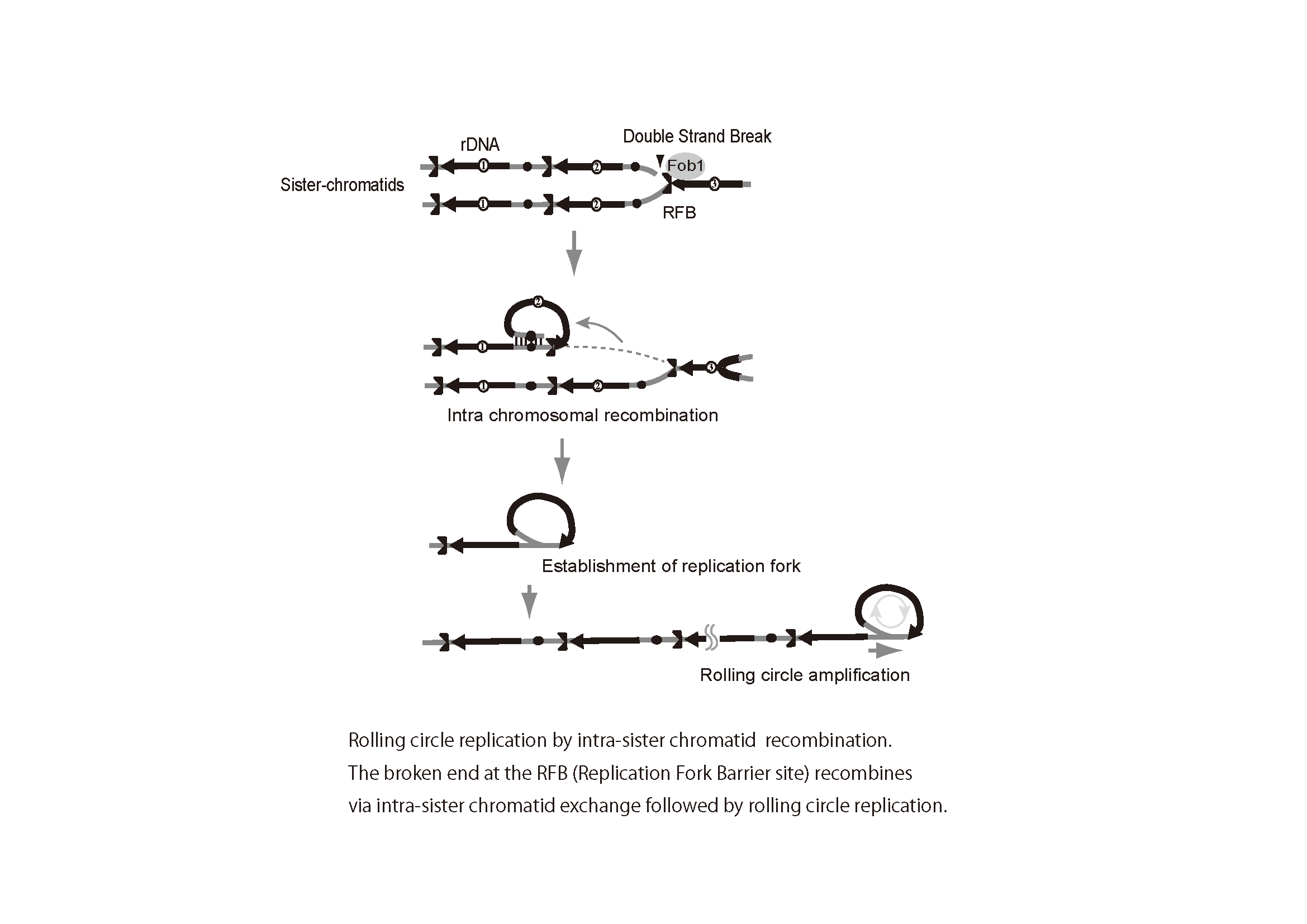 |
|
 |
Takehiko Kobayashi was awarded “the 29th Inoue prize” by Inoue Foundation for Science.
Title "Study on gene amplification and its relationship to cancer and aging" 01/29/13 
 
Takehiko Kobayashi, Professor of Cytogenetics, was awarded “the 29th Inoue prize” by Inoue Foundation for Science. This prize is awarded to scientists who conducted basic and original scientific works. Takehiko Kobayashi revealed the molecular mechanism of “gene amplification” that contributed to cancer and aging.
Inoue Foundation for Science
http://www.inoue-zaidan.or.jp/
|
|
 |
Kobayashi received the 2012 “Prize for Science and Technology” by the Ministry of Education, Culture, Sports, Science and Technology, Japan. 04/09/12
 
This prize is awarded to scientists who conducted pioneering and original scientific works. Takehiko Kobayashi revealed the molecular mechanism of “gene amplification” that contributed to evolution and adaptation using the ribosomal RNA gene cluster as a model system. Kobayashi also found that the amplified genes affect cellular senescence by their instabilities, and he developed a new research field for aging study.
http://www.mext.go.jp/b_menu/houdou/24/04/1319413.htm
|
|
 |
Kobayashi’s review was selected the top 2% paper by Faculty 1000. 02/11/11
 
http://f1000.com/8159964
|
|
 |
Kobayashi’s review was published in Cellular and Molecular Life Sciences. 01/11/11
 
Kobayashi, T. (2011) Regulation of ribosomal RNA gene copy number and its role in modulating genome integrity and evolutionary adaptability in yeast. Cell. Mol. Life Sci. Jan 5. [Epub ahead of print]
|
|
 |
Ide and Kobayashi published protocols of two-dimensional and pulsed-field gel electrophoresis in Current Protocols. 12/25/10
 
Ide, S., and Kobayashi T. (2010). Analysis of DNA Replication in S. cerevisiae by Two-Dimensional and Pulsed-Field Gel Electrophoresis. Curr. Prot. Sup49 UNIT22.14.1-12.
|
|
 |
An Indian student from Indian Institute of Technology(IIT, Kanpur) completed the NIGINTERN2010 course. 7/15/10
 
An Indian student from Indian Institute of Technology(IIT, Kanpur) completed the NIGINTERN2010 course. He studied on the mechanism of gene amplification for ten weeks.
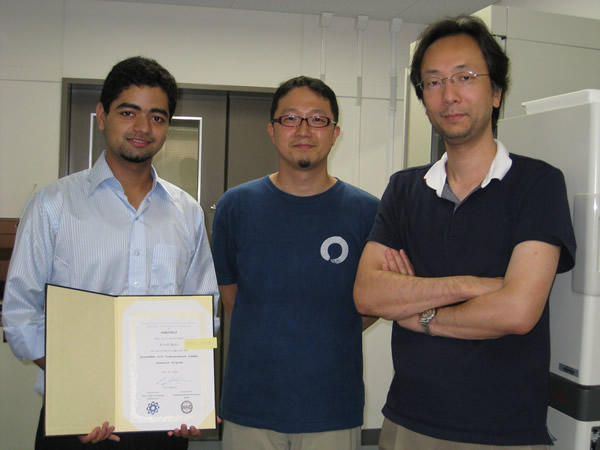
|
|
 |
Ide et al. (2010) was selected " Exceptional" paper by Faculty of 1000 Biology. 02/18/10
 
Ide et al. (2010) was selected " Exceptional" paper by Faculty of 1000 Biology. See the evaluation at this site:
http://www.f1000biology.com/article/id/1977958
|
|
 |
Our results were published in Science. 02/05/10
 
Title: Abundance of ribosomal RNA gene copies maintains genome integrity.
Authors: Ide, S., Miyazaki, T., Maki, H., and Kobayashi, T.
Journal: Science vol.327, p693-696 (2010).
DOI: 10.1126/science.1179044
http://www.sciencemag.org/cgi/content/abstract/327/5966/693
This paper is introduced in “The Scientists” “nature reviews Mol.Cell Biol.,vol.11, p160-“ and Current Biology, 20, R368-R370.
http://www.the-scientist.com/blog/display/57135/
http://www.nature.com/nrm/journal/v11/n3/full/nrm2857.html
|
|
 |
Ganley et al. (2009) was selected "Must Read" paper by Faculty of 1000 Biology.
 
Ganley et al. (2009) was selected "Must Read" paper by Faculty of 1000 Biology.
See the evaluation at this site:
http://f1000biology.com/article/id/1345961/evaluation
|
|
 |
Our results were publishes in Mol Cell. 09/11/2009
 
Title: The effect of replication initiation on gene amplification in the rDNA and its relationship to aging.
Authors: Austen R.D. Ganley, Satoru Ide, Kimiko Saka, Takehiko Kobayashi
Journal: Molecular Cell , Vol.35, p683-693 (2009);
DOI:10.1016/j.molcel.2009.07.012
|
|
 |
An Indian student from Indian Institute of Science Education & Reserch(IISER,Pune) completed th NIGINTERN2009 course.
7/16/09
 
An Indian student from Indian Institute of Science Education & Reserch(IISER,Pune) completed the NIGINTERN2009 course. He studied on the mechanism of chromosome segregation in meiosis and biochemistry of RNAi-related proteins for ten weeks. 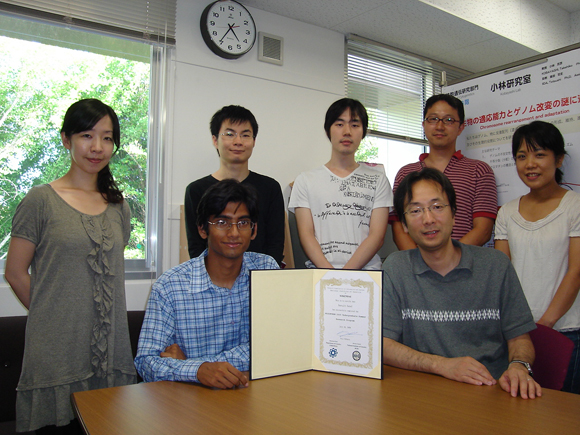
|
|
 |
We have an Indian student of NIGINTERN2008.06/17/08
 
We have a student ( 3rd year undergraduate) in the lab from India (Indian Institute of Technology, Madras).
He stays for 〜2.5 months and studies mainly about yeast genetics.
In the pictures, we gave a "Tenpura (only vegetable) welcome party" for him.
|
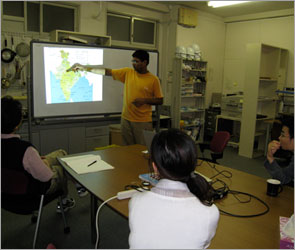
|
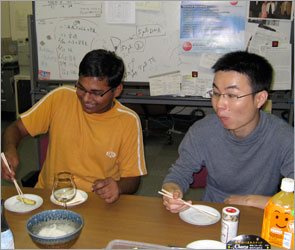 |
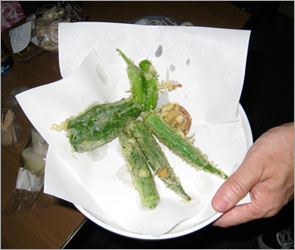 |
|
|
 |
The rDNA theory for aging has been published. 02/26/08
 
Title |
A new role of the rDNA and nucleolus in the nucleus - rDNA instability maintains genome integrity |
Journal |
BioEssays 30, 267-272 (2008); DOI: 10.1002/bies.20723 |
Author |
Kobayashi, T. |
Summary |
The rDNA is a quite unique region in the genome. The typical eukaryotic cell has more than 100 rDNA copies that forms long tandem repeats in the chromosome. The mysterious part of the rDNA is that not all the copies are transcribed. In yeast, only half of them produce ribosomal RNA. It is not known why cells keep these extra copies. We previously developed a system to change rDNA copy number and we used this to establish stains with different rDNA copy numbers. Through observation of these strains, I propose an “extracoding function” of the rDNA. I have summarized this as the “rDNA theory” in this paper. According to the theory, rDNA may be related not only to senescence, but also to tumorigenesis. |
|
|
 |
A text book partially written by Ganley and Kobayashi has been published.
12/12/07
 
COMPARATIVE GENOMICS VOLUME 1Methods in Molecular Biology , Vol. 395, Bergman, Nicholas H. (Ed.)
ISBN: 978-1-58829-693-1
|
|
 |
Austen Ganley (Assist. Prof.) was promoted and went back to his home
country, New Zealand.
12/10/07
 
We had a farewell party with his friends.
Congratulations !
|
|
 |
Kobayashi’s paper won the GGS Prize 2007.
10/10/07
 
The GGS Prize is given to the best paper published in GGS (Genes & Genetic Systems by the Genetics Society of Japan) in the year.
Paper title:
Kobayashi, T. (2006). Strategies to maintain the stability of the ribosomal RNA gene repeats. Genes Genet. Syst. 81, 155-161.
|
|
 |
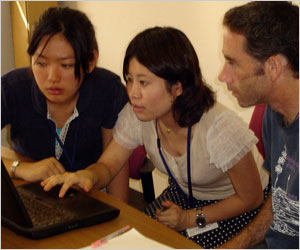 Summer course has finished Summer course has finished
08/27/07

We had two summer students ( 3rd year undergraduates) in the lab from Aug.16th to 27th. During this period they carried out several experiments, gaining experience in yeast genetics, genome analysis, bio-imaging, DNA sequencing and more. In the picture, the students and Austen Ganley (Assist. Prof., right) are discussing the data. |
|
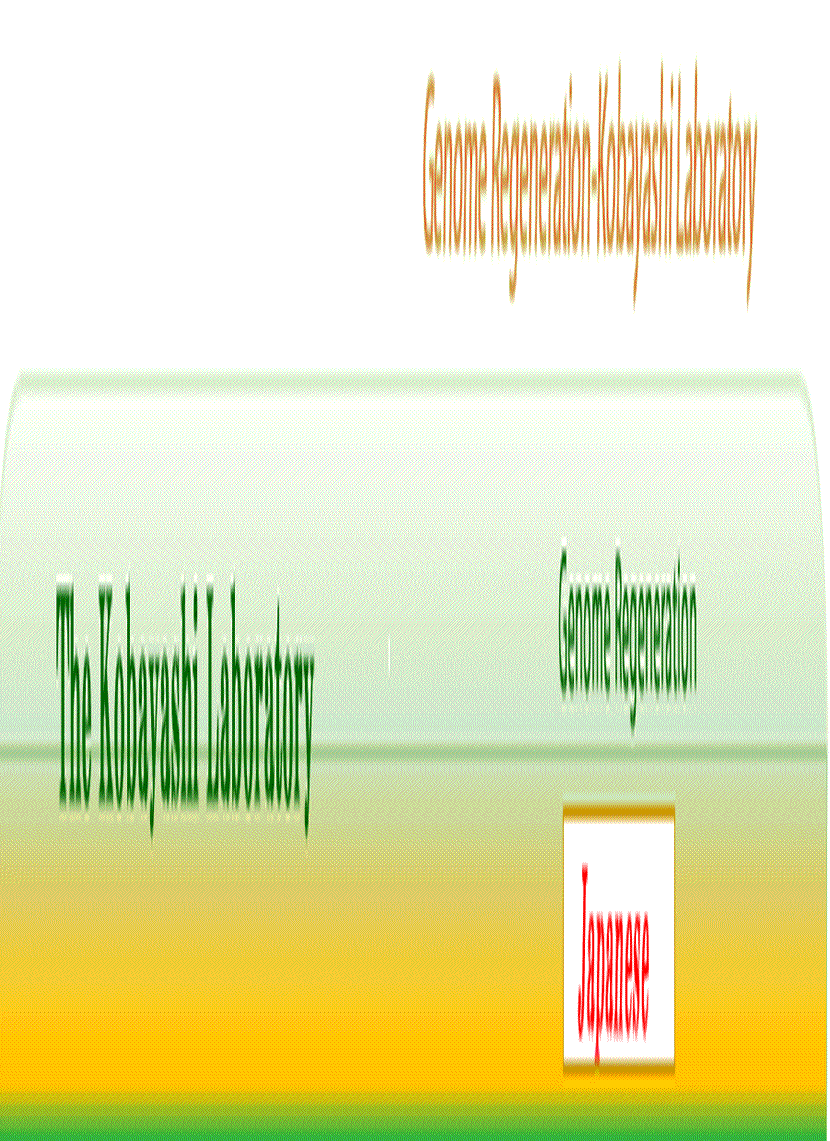







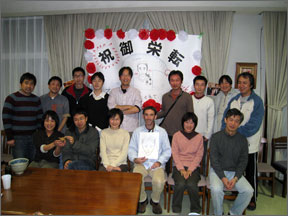
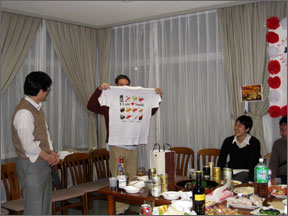




 Summer course has finished
Summer course has finished




